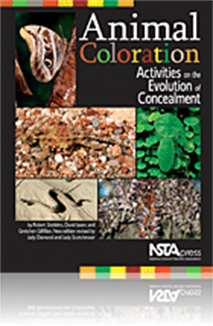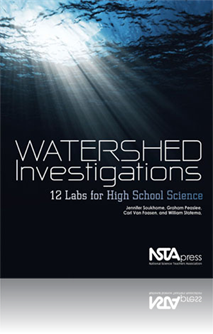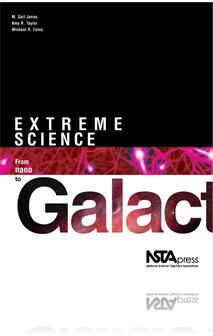All Book Chapters
Book Chapter
Most animals are patterned. While some markings may serve as an advertisement, many appear to function in concealment. Because of the principal way in which they seem to function, such markings are often termed disruptive coloration. Although there a...
Book Chapter
Modeling Glacial Features With Sand
In this investigation, students make a model of the different erosional features of valley and continental glaciers out of sand and determine their impact on topography and hydrology. ...
Book Chapter
Aquatic Macroinvertebrate Identification
Everyone is familiar with terrestrial insects such as dragonflies, houseflies, mosquitoes, and beetles, but many of us are unaware that several insects live in the water during their larval stages. These insects are part of a larger group of organism...
Book Chapter
Factors That Affect Eutrophication
In this investigation, the effects of excess nutrients (nitrate and phosphate) on algae will be examined. An excess of these nutrients can lead to eutrophication in ponds and lakes. Eutrophic lakes typically are shallow, have mucky bottoms, and have ...
Book Chapter
This investigation consists of two parts, in which students first model the effects of groundwater contamination and then track the flow of the contamination. However, Part I does not have to be done in order to do Part II. This Teacher Information s...
Book Chapter
Glacial Features of a Watershed
The objective of this investigation is for students to learn how glaciers shaped a watershed. ...
Book Chapter
This investigation gives students the opportunity to view the outside world and bring science into the field. Teaching students how to identify plants gives them a greater appreciation for nature, just as learning to read words lets young students be...
Book Chapter
Learning how to delineate a wetland using official criteria can be an enlightening experience for students and teachers. The objective of this investigation is for students to delineate the boundaries of an area in a watershed and categorize it as a ...
Book Chapter
In this investigation, students will select, identify, and test a common plant for allelopathy by extracting the plant’s natural chemicals and measuring the effect on the germination of lettuce seeds. They will analyze the data statistically to det...
Book Chapter
When humans change the natural topography, certain effects are likely to be seen in a watershed. The transportation of water and sediment increases when streams are straightened and, with the increased flow rate of water, erosion also increases. All ...
Book Chapter
Streamflow, or discharge, is defined by the U.S. Geological Survey (USGS) as the volume of water flowing past a fixed point in a fixed unit of time. The discharge of a stream can be affected by many things, including topography and channel morphology...
Book Chapter
Flood Frequency Analysis for a River
In many watersheds, the frequency of flooding has greatly increased in the past 20 years, mainly due to changes in the hydrology as a result of farming and urbanization. Human habitation of floodplains causes floods to be perceived as destructive, bu...
Book Chapter
Comparison of Phosphate Levels in Stream Sediments
Phosphorus is an important nutrient to all life. Unfortunately, when phosphate reaches the soil it is not all used up by the plants. If excess phosphate enters the waterways in the watershed, it can cause increased plant growth in lakes and streams a...
Book Chapter
The study of science at the extremes of size often involves creating and testing models of science phenomena. Scientists and engineers often build models at different sizes and scales. These models can be physical, such as a Styrofoam ball model of t...
Book Chapter
Your World or Mine? Different Perspectives
Is the glass half-empty or half-full? That depends on your perspective. Differences in vantage point or prior knowledge can lead to different interpretations or conclusions. Scientists also have various perspectives on new discoveries or the results ...




